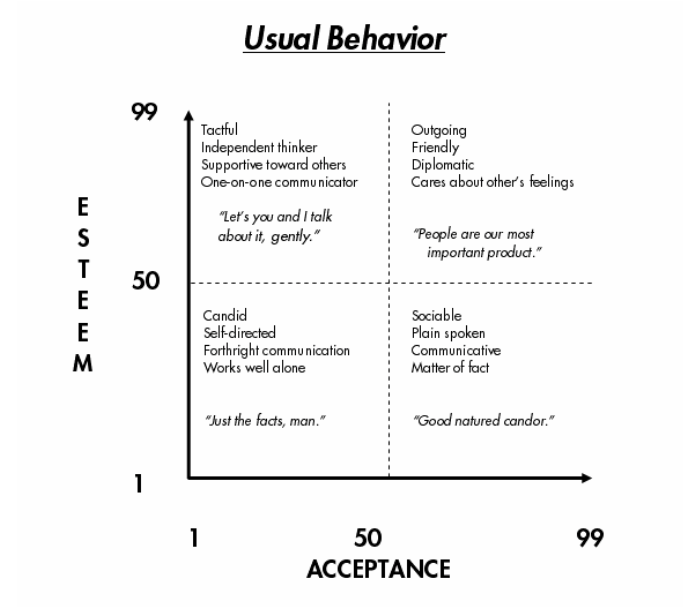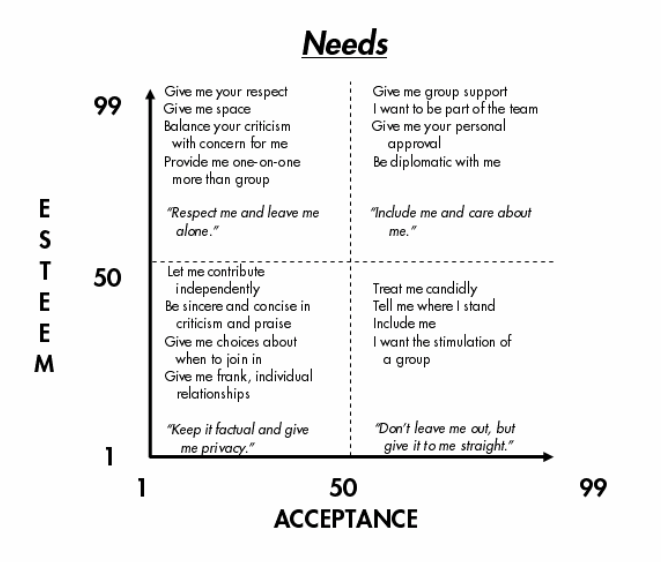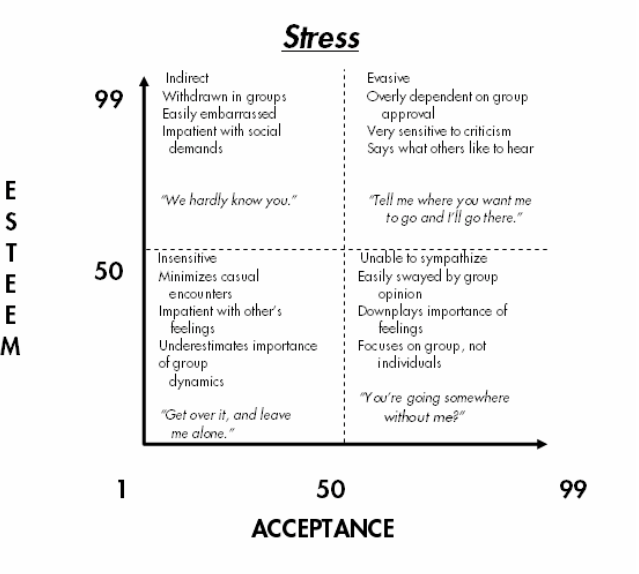Component CombinationsThe Birkman Components offer insight into a person’s behavior and motivations. Individually, the Components are very descriptive of individuals’ Usual and Stress behavior, as well as their Needs. However, people do not exhibit just one behavior at a time. The eleven Components combined make up the total person. Therefore, when learning about an individual, it is important to look at Component combinations, not just isolated Components. Birkman has created a group format called the Components Chart. This format allows you to plot a group/team on various Component Combinations. In addition to being able to see where the individuals in a group are plotted, there are also descriptors for each quadrant (i.e. High/High, Low/High, High/Low, and Low/Low). You can access this format by going to the Group or Single Format section of BirkmanDirect®. This format features six critical Component Combinations: 1. Esteem&Acceptance–PeopleRelations The next few Birkman Beginnings will discuss these combinations in more depth and include the text from the Components Chart for each combination. As you know, Esteem describes one on one interaction and Acceptance deals with group interactions. Therefore, the combination of the two describes “People Relations.” |
|
|
Issues Impacted by Esteem (One on One, Personal)
Issues Impacted by Acceptance (Group, Casual)
By looking at the chart above you can see that individually these Components impact various issues, but together they provide you with additional insight into a person’s style. For example, two people with high usual Esteem will look different depending on their Acceptance Scores. A high Esteem/low Acceptance person will be both sensitive and will shine when working with one or two individuals; whereas, the high Esteem/high Acceptance person will be sensitive, but will also come across as very sociable. Below is a graph showing the descriptors for the People Relations combination. We have shown the Esteem/Acceptance Component combinations for Usual, Need and Stress.
|
|





